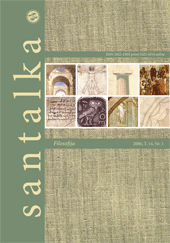APPLYING NATURAL SCIENCES TO STUDYING HISTORY: Regarding the Example of England and the Industrial Revolution. Part I
APPLYING NATURAL SCIENCES TO STUDYING HISTORY: Regarding the Example of England and the Industrial Revolution. Part I
Author(s): Victor Krivorotov, Lucy BadalianSubject(s): Philosophy
Published by: Vilnius Gediminas Technical University
Keywords: evolution; ecosystem; coenosis; technology; history.
Summary/Abstract: In this work we outline a bio-ecological approach to studying history. We show that human societies from the first civilizations to our days are techno-ecosystems and do not differ much from the natural ecosystems of a lake or a forest that are also restricted by their supplies of food. Below we call them coenoses (sing. coenosis) – this word from Greek is used in biology to denote a mutually dependent community of life-forms. Historically, a succession of distinctive nestled geo-climatic zones was domesticated as the older ones became exhausted due to growing demographic pressures. In this context, evolution is not synonymous with competition. Cooperation of mutually dependent species is crucial for domesticating a new ecosystem. At specific moments in its lifecycle, competition intensifies, leading to speciation. The dominant technology of each growing society serves as its unique adaptation to its geo-climatic zone. Using it, a particular society, just like a biological species, gains an evolutionary advantage over its neighbors by opening access to a new, previously inaccessible resource or, in plain English, a new source of food. For example, thermoregulation of warm blooded animals opened up colder habitats. Or, the use of canals in the uninhabited swamps of Mesopotamia paved the way to the irrigation agriculture of the great rivers’ deltas circa the V Millennium BC. It enormously increased both the grain yields and the population densities. The feeding chains that grew around the abundant grain evolved into the ancient egalitarian society, perfectly attuned to using mass labor. The 20th century, quite dissimilar in its technologies, customs, etc, unfolded according to the same master design. Oil deposits that, for millennia, sat around the world idly, turned into the foundation of the affluent consumer society, based on democracy. The car, along with the highways, suburbia and supermarkets became the symbol of modernity. Today, the amount of available food supplies is restricted by a single factor only, namely, the price of oil. Below, using an example from the Industrial Revolution, we will show that the process of utilizing a newfound resource by building a society around it is essentially cyclical. Social organisms evolve in regular and recurring patterns, not unlike birth, youth, maturity and death of biological beings. Each of these steps has its own functionality and must be lived through, much like the fact that one can’t mother children until she reaches puberty. That is why this approach possesses significant predictive capabilities.
Journal: Santalka: Filologija, Edukologija
- Issue Year: 14/2006
- Issue No: 1
- Page Range: 47-61
- Page Count: 15
- Language: English

